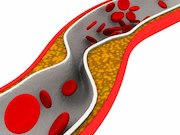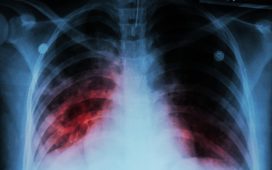Study shows 11 and 9 percent plaque reduction in treated male, female mice compared with controls
FRIDAY, May 11, 2018 (HealthDay News) — Self-assembling peptide amphiphile (PA) nanofibers, incorporating an 18 amino acid sequence that retains the cholesterol efflux actions of apolipoprotein-A1 (apoA1) and a liver X receptor (LXR) agonist can target and treat atherosclerosis, according to an experimental study presented at the American Heart Association’s Vascular Discovery: From Genes to Medicine Scientific Sessions 2018, held from May 10 to 12 in San Francisco.
Neel A. Mansukhani, M.D., from the Northwestern University Feinberg School of Medicine in Chicago, and colleagues fed low density lipoprotein receptor knockout mice a high-fat diet for 14 weeks, and then administered bi-weekly injections of the nanofibers or control for eight weeks.
The researchers found that the targeted PA nanofiber (ApoA PA) and Apo-A-LXR PA nanofibers effectively targeted atherosclerotic plaque in the aortic root. The optimum concentration of nanofiber and optimum dose were 2 mg/mL and 6 mg/kg, respectively. ApoA PA nanofiber localized to the aortic root for about two to three days; by seven to 10 days, ApoA PA nanofiber was cleared. One-day post-injection, concentrations of ApoA PA in the aortic root were five-fold higher than in the lung, liver, and kidney. Compared with phosphate-buffered saline treated controls, male and female mice treated with ApoA-LXR PA had 11 and 9 percent plaque reduction, respectively, after eight weeks of treatment.
The results “demonstrate that a novel targeted nanofiber binds specifically to atherosclerotic lesions and reduces plaque burden after a short treatment duration,” Mansukhani said in a statement.
Copyright © 2018 HealthDay. All rights reserved.








